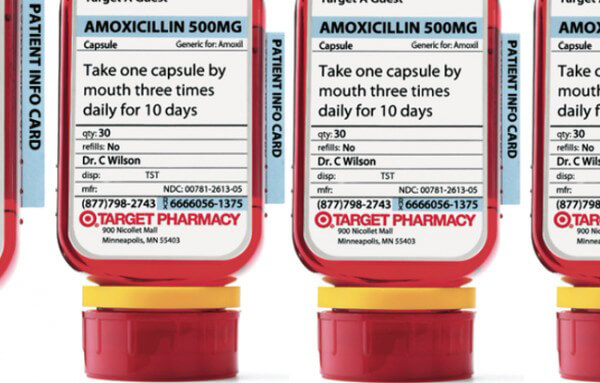The history of healthcare marketing goes back a long time but some modern strategies can be traced back to the 1970s, when practices, insurance providers, and pharmaceutical products began vying in earnest for market share in this increasingly competitive sector.
Sounds familiar, right?
Today, highly-effective healthcare marketing is a critical component of growing, sustainable, and supportive healthcare organizations. Accordingly, healthcare marketing budgets increased by 15% in 2022 as companies allocated billions of dollars to reach new patients and customers.
Now, industry trends and patient expectations are prompting many practices to rethink their marketing efforts to optimize their outreach to support practice and patient outcomes. Often, these efforts are digitally driven, meeting patients where they are with compelling content and information that promotes growth and engagement.
When it comes to the ever-evolving world of healthcare sales and marketing, there are no universal or proven strategies for sustainable business growth. Instead, providers must remain agile, building awareness that ensures growth and generates revenue.
Keep reading to learn about the history of healthcare marketing and its implications for healthcare providers looking to maximize their impact in 2022 and beyond.
What we can learn from different periods during the history of healthcare marketing
We mined the last 50 years of the history of healthcare marketing to dig up insights and best practices that you can use to make your medical marketing campaigns as impactful as possible.
Here’s a rundown covering highlights of what we learned.
Healthcare marketing in the 1970s and 1980s
In 1965, President Johnson signed legislation that created the Medicare and Medicaid programs, providing health insurance to millions of previously-uncovered people. The programs radically altered the healthcare sector, changing operational models and reviving the impetus for high-quality marketing to attract doctors and patients to their facilities.
Medicare and Medicaid normalized cost-based reimbursement, limiting competition among hospitals and healthcare providers. As a result, marketing efforts targeted physicians through rigorous physician relations programs to entice doctors to admit their patients to their hospitals.
However, the history of healthcare marketing changed as patient choice and autonomy became more popular, prompting many hospitals to begin marketing healthcare services using popular media, including billboards, television, and radio, to encourage patients to choose their facility when given a choice.
As physician influence continued to wane in the 1980s, hospitals reimagined their offerings as products and services that could be marketed directly to consumers to impact patient outcomes, improve profits, and enhance market share.
Similarly, doctors, practices, and providers found themselves competing for patients, prompting them to invest in marketing like never before. According to one analysis (pdf), healthcare marketing spending grew from $50 million to $500 million in the 1980s, reflecting a definitive shift in the history of healthcare marketing.
To refine their messaging when marketing healthcare services, companies began conducting consumer research to understand better patient satisfaction and engagement trends, an essential development for marketing in general and medical marketing in particular.
Healthcare marketing in the 1990s and 2000s
Prompted by a confluence of factors, including the introduction of the Prospective Payment System, the expansion of managed care, and a drop in demand for hospital beds, hospital mergers and acquisitions soared in the 1990s, doubling the number of annual hospital mergers from the previous decade, forever altering the history of healthcare marketing.
These mergers and acquisitions create much larger healthcare systems with bigger marketing budgets and more business-savvy leadership.
Meanwhile, consumers were empowered like never before, and marketing healthcare services pivoted accordingly. Patient and consumer research informed new campaigns prioritizing the consumer’s needs while pushing specific products and treatments. Many healthcare marketing solutions during this time emphasized healthy people and the producers and services that support their lifestyles.
Taken together, the 1990s and 2000s reflect a significant maturation in the history of healthcare marketing, professionalizing efforts, and streamlining outcomes to support a more robust healthcare industry.
Healthcare marketing in the 2010s
As increasingly larger hospital networks became more comfortable and reliant upon marketing healthcare services, spending increased as well. One analysis by the Journal of the American Medical Association found that medical marketing spending increased from $17.7 to $29.9 billion between 1997–2016.
This spending was driven, in part, by the rise of the pharmaceutical industry and the increased emphasis on direct-to-consumer marketing initiatives.
The 2010s also introduced social media marketing as platforms like Facebook attracted large audiences, and targeted advertising capabilities allowed healthcare marketing to be more precise, impactful, and digital.
The digitalization of healthcare generally presented new opportunities to engage patients and expanded the options for healthcare marketing, making online presence a crucial factor in their customer engagement efforts.
Healthcare marketing during COVID-19
The pandemic introduced a new era in the history of healthcare marketing, disrupting day-to-day work life for many healthcare marketing professionals as the need for advancing digitization and offering more robust online patient communications went from a nice-to-have to a must-have for most hospitals and other medical providers.
Furthermore, healthcare providers and their marketing partners had to evaluate their advertising collateral to ensure that their messaging tone and content were appropriate for the unprecedented and disruptive pandemic environment.
For instance, advertisements for elective surgeries or on-site procedures needed to be modified to account for on-the-ground realities. Similarly, the pandemic hastened the expansion of telehealth options and the integration of mental health services.
The marketing of healthcare services today
As hospitals and medical organizations apply lessons from the history of healthcare marketing and their unique experience during the pandemic, many are updating advertising and other promotions to reflect changing processes, values, and outcomes.
For example, it’s estimated that 7% of all Google searches are healthcare-related, making SEO supremacy and digital content important priorities for marketing healthcare services today.
In the process, healthcare marketing is trying to make an impact, leveraging consumer-focused collateral to support patient engagement efforts.
Memorable examples of modern healthcare marketing
In a crowded marketing ecosystem, breaking through the noise with compelling brand messaging and product awareness requires innovation and ingenuity. Here are several memorable examples of modern campaigns that delivered significant healthcare marketing ROI.
Target: ClearRx (prescription bottle rebranding)
As a consumer-centric company, Target invested in guest feedback and consumer research to identify existing prescription bottle pain points and limitations. The product emphasizes health literacy by featuring color-coded packaging, an easy-to-read label, and a unique upside-down design.

Target’s UX design team proved that making business changes that improve the customer experience is an investment in marketing that can pay off big-time
ALS: Ice bucket challenge (social media fundraising)
In 2014, millions of people filmed themselves dumping buckets of ice water on their heads to raise money and awareness of ALC. The campaign relied on celebrity, social media, and community engagement to significantly expand the campaign’s reach and resonance.

The ALS raised $115 million as part of its ice bucket challenge, one of the most successful fundraising campaigns in the history of healthcare marketing
BetterHelp: “Sometimes you just need some help” (TV commercials)
Recognizing the stigma of mental health support, Better Help created a series of ads that bring levity to the situation while prompting viewers to take action. The commercials are short, shareable, and actionable, expanding their reach in a digital-first environment.

FAQs about the history of healthcare marketing
The way that medical services and products have been marketed over the years has changed a lot. Read on to get answers to common questions about the history of healthcare marketing.
When did healthcare marketing begin?
Marketing has been part of the world of healthcare ever since people have been able to profit from related products and services, but most experts cite modern, recognizable advertising endeavors starting around the late 1970s and early 1980s.
Why is the term “snake oil” associated with the history of healthcare marketing?
Though real snake oils have been part of traditional Chinese medicine for ages, “snake oil” is now commonly associated with worthless concoctions sold by boisterous charlatans during the California Gold Rush period. During this time, a flurry of con artists sold supposed snake oil liniments and other fake medicine, cheating thousands of people out of their money by using ads that made false claims and other types of marketing citing pseudo-scientific evidence.
What are examples of some significant events in the history of public health that have changed medical marketing practices?
- Increase in safer jobs/improved workplace safety
- Increase in vaccines to prevent the spread of infectious diseases
- Increase in family planning
- Decrease in smoking
- Increase in car safety
Marketing healthcare services in 2022—and beyond
With a wide-angle lens, it’s clear that the history of healthcare marketing reflects a relentless awareness of consumer engagement, digital proliferation, and agile implementation, proving that healthcare providers will need to adapt to build awareness and ensure growth continually.
At our top healthcare marketing company, we bring more than 18 years of healthcare marketing experience, helping providers move from strategy to execution quickly. Get TBH Creative involved, and we’ll lead you in the right direction.

